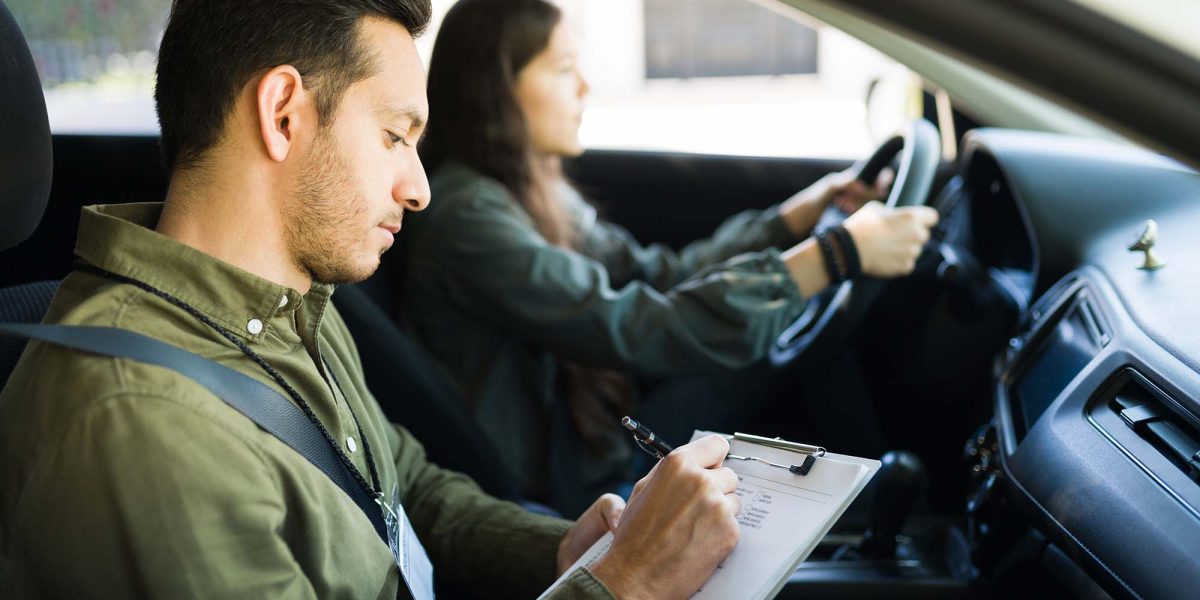Almost everyone takes it, everyone remembers it differently, and everyone sits in the same place after passing it: behind the wheel. People are usually eager to share personal anecdotes about the famous driving test. Some pass on their first try, while others fail for such “transgressions” as yielding to a frenzied squirrel crossing the street rather than driving onward. Driving instructors are supposed to be silent while students are taking their road tests. However, instructors often feel the need to add their two cents to an already nerve-wracking situation. Their loud and quick demands are guaranteed to leave the student driver confused and clouded with hesitation, ultimately setting them up for failure. As a result, driving instructors will often get labeled as either “good” or “bad” by the kids in a community, which leaves them praying to get a good instructor more than steeling themselves to handle the exam. It makes one wonder if the chance of passing the test is more directly related to the instructor they get, or that instructor’s mood, than anything else.
That led me to some questions: What is the history of the modern-day driving exam or “road test” in the U.S., and how have the tests evolved over the years? Did the transition from carriage to automobile result in dangerous and unregulated drivers? And how do states currently differ in their regulation of drivers?
According to Wikipedia and the American Automobile Association (AAA), Massachusetts and Missouri were the first states to require driving licenses in 1903, although there was no associated test required to obtain a license. The first required test came in 1908, when Rhode Island began requiring an exam to get a license. In 1913, New Jersey took it a step further and began requiring both a written exam and road test in order to obtain a license.
Many states soon joined New Jersey in issuing these requirements. However, by 1930, still only 24 states required licenses, and only 15 of these states required an actual driver’s exam. The last state to regulate drivers was South Dakota. After experiencing a high number of crash fatalities, the state began issuing licenses in 1954 and finally began requiring tests in 1959. In 2023, South Dakota currently has the youngest age for obtaining a license: 14 years and 3 months.
The country’s average age for obtaining a license is a couple years older than South Dakota: 16 years. New Jersey has the oldest age requirement at 17 years, and New York is among a handful of states that require potential drivers to be 16 and a half years before being eligible for a license.
As to the easiest state for getting behind the wheel? We are back to South Dakota, which, along with Ohio and Arkansas, is ranked the easiest state for obtaining a license. The hardest state for obtaining a license is Washington, where according to the state’s Department of Licensing, the pass rate for the knowledge test is only 46%.
While getting a license is something many look forward to, the percentage of young drivers is declining. In 1984, roughly 48% percent of 16-year-olds had a license, whereas in 2019, the percentage was about 26%. This may be attributed to a variety of factors: states creating more laws and restrictions for drivers under 18; more transportation options such as Uber; and perhaps simply a lack of interest in driving. However, it does make one wonder when and if these rising teens will ever get their license. This new generation of children may never experience a driving test, as self-driving cars slowly start to take over the streets. In the modern world, where things are constantly changing, the driving test is almost guaranteed to become meaningless, and driving licenses will be obsolete. How is it possible that sometime in the distant future there will be no licensed drivers? Will the streets be safer when all of the cars are self-driving? It is an interesting question that leaves one only to speculate.
Those who stepped from horse-drawn carriages into Model Ts probably never dreamed of streets streaming with tank-like automobiles and people daunted by road tests. And as we soon step from our current vehicles into a world of self-driving cars, one wonders when the illustrious driving test will become nothing more than a footnote in Wikipedia.
